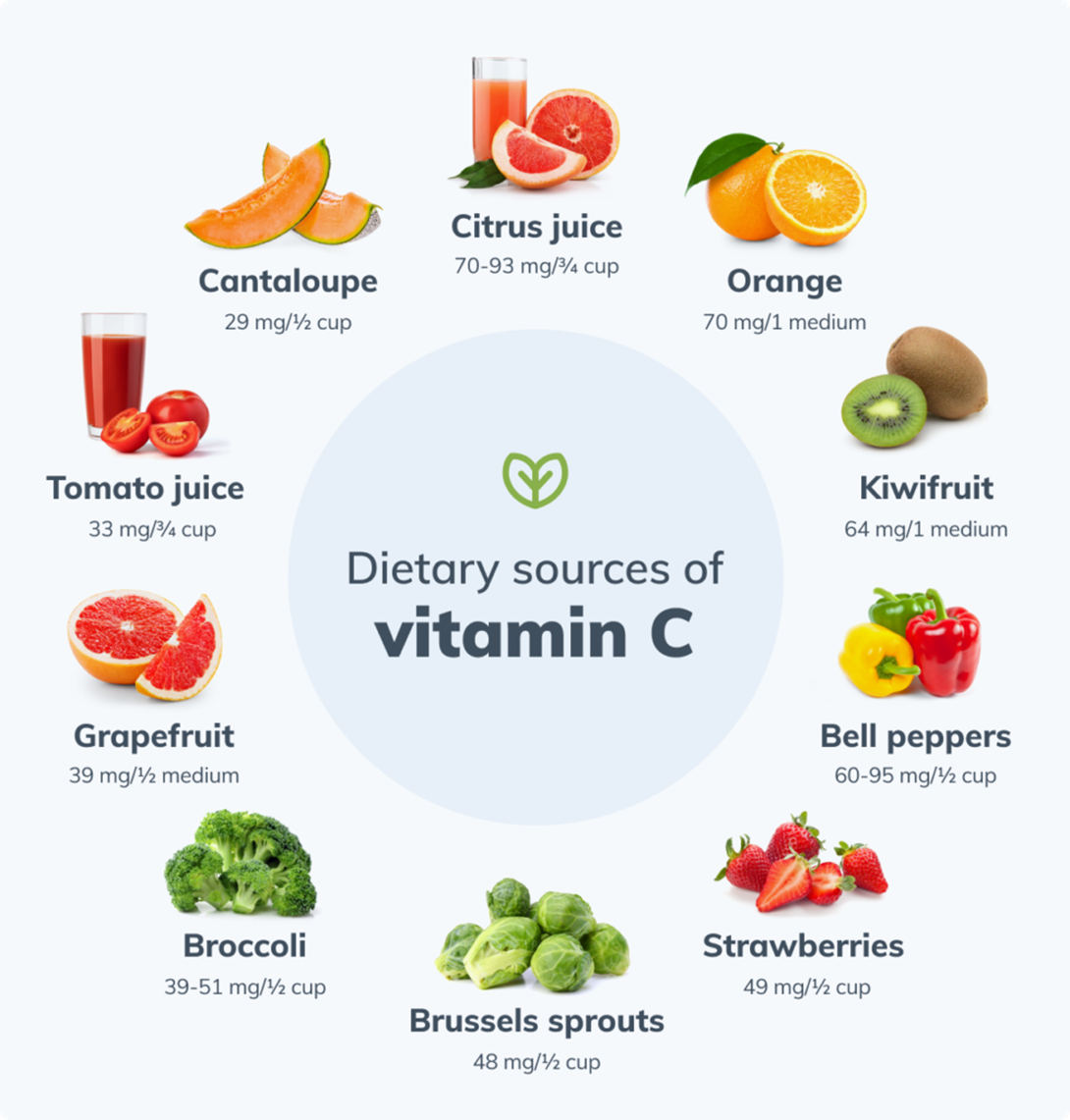A nurse is reinforcing teaching with a client who needs to increase vitamin C intake to promote wound healing. Which of the following foods should the nurse recommend as the best source of vitamin C?
1 small banana
1 medium fresh green pear
1 small pink grapefruit
1 small apple with the skin
The Correct Answer is C
Choice A reason: A small banana contains about 8.7 mg of vitamin C, which is only 10% of the recommended daily intake for adults.
Choice B reason: A medium fresh green pear contains about 4.3 mg of vitamin C, which is only 5% of the recommended daily intake for adults.
Choice C reason: A small pink grapefruit contains about 38.4 mg of vitamin C, which is 43% of the recommended daily intake for adults. This is the highest amount of vitamin C among the four choices.
Choice D reason: A small apple with the skin contains about 8.4 mg of vitamin C, which is only 9% of the recommended daily intake for adults.

Nursing Test Bank
Naxlex Comprehensive Predictor Exams
Related Questions
Correct Answer is C
Explanation
Choice A reason: Requesting that the caller contact the client’s provider directly for information is not the best action. The nurse should first determine if the caller has the client’s consent to receive information and if the caller is authorized to do so.
Choice B reason: Asking the caller to contact the client directly for information is not appropriate. The client may not be able to communicate or may not want to share information with the caller. The nurse should respect the client’s privacy and confidentiality.
Choice C reason: Gathering additional information from the caller to verify their identity is the most appropriate action. The nurse should ask the caller for their name, relationship to the client, and other details that can confirm their identity. The nurse should also check the client’s record for any written or verbal consent to disclose information to the caller.
Choice D reason: Providing the caller with a brief update about the client’s condition is not advisable. The nurse should not share any information without verifying the caller’s identity and the client’s consent. The nurse should also follow the provider’s office policy and the Health Insurance Portability and Accountability Act (HIPAA) guidelines for disclosing information.
Correct Answer is D
Explanation
Choice A reason: This is incorrect because the client should urinate before the specimen collection to avoid contaminating the stool with urine.
Choice B reason: This is incorrect because the specimen should be kept in a cool area to prevent bacterial growth and decomposition.
Choice C reason: This is incorrect because the client should place at least 2.5 cm (1 in) of formed stool or 15 to 30 mL of liquid stool into a culture tube.
Choice D reason: This is correct because the client should avoid placing toilet tissue in the bedpan after defecation to prevent interfering with the laboratory analysis of the stool.
Whether you are a student looking to ace your exams or a practicing nurse seeking to enhance your expertise , our nursing education contents will empower you with the confidence and competence to make a difference in the lives of patients and become a respected leader in the healthcare field.
Visit Naxlex, invest in your future and unlock endless possibilities with our unparalleled nursing education contents today
Report Wrong Answer on the Current Question
Do you disagree with the answer? If yes, what is your expected answer? Explain.
Kindly be descriptive with the issue you are facing.
